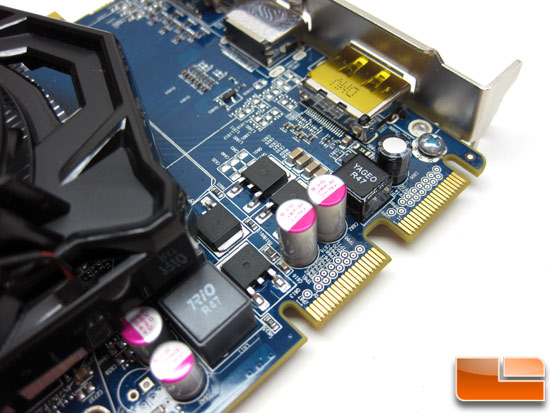Sapphire Radeon HD 5670 1GB

The picture above shows the Sapphire Radeon HD 5670 editioncard and right off the bat you can see that it uses an Arctic Cooling GPU cooler that is a dual-slot design. This should greatly improve cooling and could possibly lower the noise levels since it has a larger fan on it that is likely slower moving.

Since the Sapphire Radeon HD 5670 features 1GB of memory the card has four memory IC's on the front and four memory IC's on the rear.

The Sapphire Radeon HD 5670 1GB GDDR5 graphics card that we took a look at used eight 1Gbit Hynix branded memory IC's with a part number of H5GQ1H24AFR T2C 938A. We have seen these IC's on Radeon HD 5700 graphics cards in the past, so these GDDR5 IC's shouldn't bottle neck the card or overclocking performance.

The Sapphire Radeon HD 5670 graphics card has a pair of CrossFire interconnects, which is something that won't be available on all Radeon HD 5670 graphics cards. If you plan on adding another card down the road for improved performance you'll want a card that has this feature or else you'll regret it. Sapphire recommends a 400 Watt or greater power supply for a single card or 475 Watts or greater if running CrossFireX. Since the card only has a max power draw of 61 Watts per card the power supply requirements are fairly low, so that is nice for a mainstream graphics card.

The Sapphire Radeon HD 5670 graphics card has a single dual-link DVI-Ioutputsalong with DisplayPort and HDMI outputs.
Now that we know a little more about the two Radeon HD 5670 graphics cards that we have in-house for testing let's take a look at the test system and then the performance levels of the cards.


